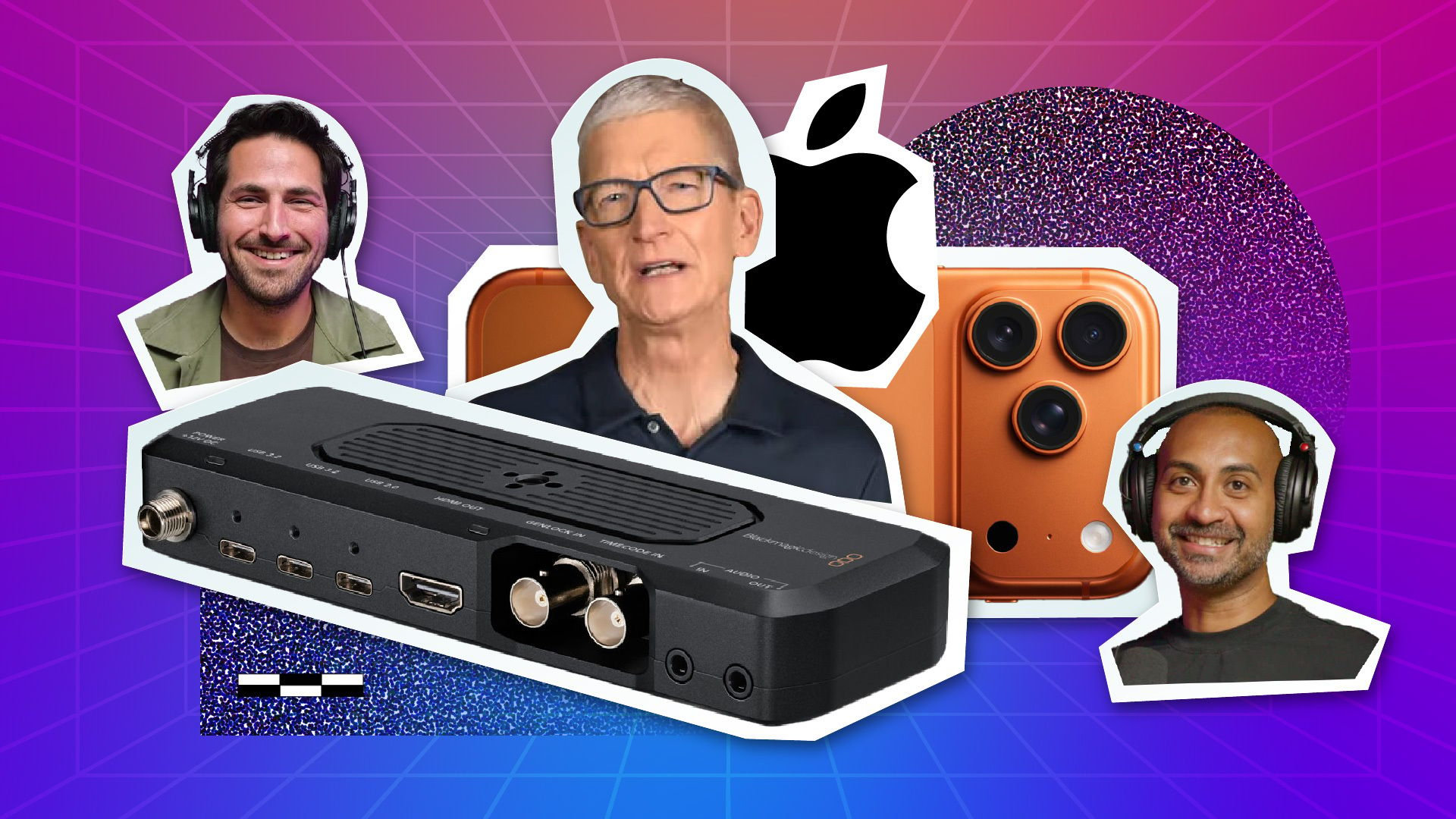Live translation in your ear, a thinner iPhone variant, pro-level camera features trickling down, and a surprise hardware dock built with Blackmagic — those were the headlines that mattered most for filmmakers and video professionals. In this episode of Denoised, hosts Addy and Joey break down Apple’s keynote with a sharp eye for what actually changes on set, in the field, and in post-production.
AirPods Pro 3 — Translation and biometric sensing move closer to production utility
Apple’s new AirPods Pro 3 weren’t just a cosmetic refresh. The headline feature for media teams is live translation: two people wearing AirPods can hold a conversation and get near real-time translation, with the iPhone coordinating the workload. According to the hosts, Apple described computation happening partly on the earbuds and largely via local inference on the phone — meaning this feature appears to be designed to work without a cloud round-trip.
Why this matters for filmmakers: on international shoots or documentary sets where a translator isn’t immediately available, a reliable in-ear translator reduces friction during run-and-gun interviews, location scouting, and crew coordination. Faster local inference is more practical than cloud-based translation when networks are unreliable on location.
Other notable AirPods additions relevant to production: heart-rate sensing in the ear (which can feed Apple Health), and deeper integration into Apple’s local model stack. These are small but meaningful moves toward using lightweight wearables as sensors that feed production telemetry and talent biometrics without adding a dedicated device.
iPhone 17 (base) — 120Hz and a new selfie sensor that thinks like a director

The iPhone 17 brings several changes that matter to camera operators and content producers, even on the non‑Pro model. Most significantly:
120Hz refresh rate on the baseline model (previously a Pro-only feature).
A redesigned front-facing sensor that moved from a horizontal crop to a square sensor. That allows horizontal or vertical selfies without degrading quality and enables intelligent framing for single-subject or group shots.
Improved sensors and modest camera quality bumps across the board.
Apple dropped one striking stat during the keynote: roughly 500 billion selfies taken on iPhones last year. While face detection is a decades-old computer vision technique, Apple is applying its “intelligence” stack to expand framing, detect groups, and automatically adjust the crop — useful for creators who rely on the selfie camera for BTS content, host segments, or social-first video.
iPhone Air — an ultra-thin experiment

Apple introduced a very thin iPhone variant that the hosts compared visually to classic thin phones like the Motorola Razr. Think of it as positioned between the standard iPhone and the Pro line. Key points:
Extremely thin chassis — marketed for minimalists.
A rear "fusion" camera that appears to contain two sensors (wide + telephoto) in a single-looking housing.
Optional magnetic battery pack that restores thicker-phone capacity (Apple claims up to 40 hours of video playback with the pack attached).
New case options: ultra-thin shell and a return of edge-bumper designs.
Practical takeaways: cinematographers will care less about thinness than battery life and thermal performance, but Apple is clearly experimenting with form factor variations before a possible future foldable. For location directors thinking about pocketability and daily carry, it could be a niche, not a mainstream, choice.
iPhone 17 Pro / Pro Max — compute for local models, better thermals, and longer glass
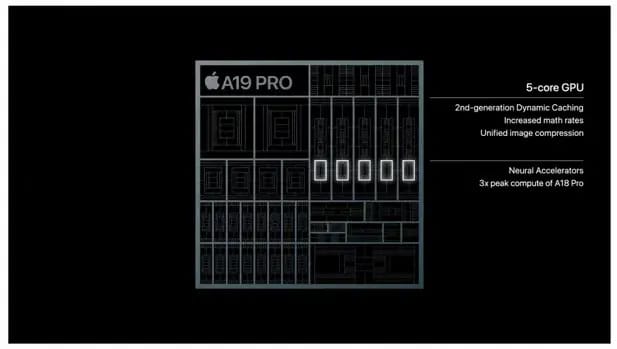
The Pro models are where the most relevant upgrades for filmmakers landed. Highlights include:
A19 Pro chip: Apple claims roughly three times the compute of the A18 Pro and “MacBook Pro-level” compute density. It also includes neural accelerators targeted at on-device inference.
Improved thermal design: Apple emphasized better heat dissipation — critical for recording long ProRes files or multi-hour timelapses without overheating and risking file corruption.
N1 connectivity chip: Wi‑Fi, Bluetooth, and Thread integrated into a single custom chip (previously common in Apple Watch combos, now in the phone).
All main sensors at 48MP; a new 200mm-equivalent telephoto at f/2.8 (up from 100mm equivalents in prior models).
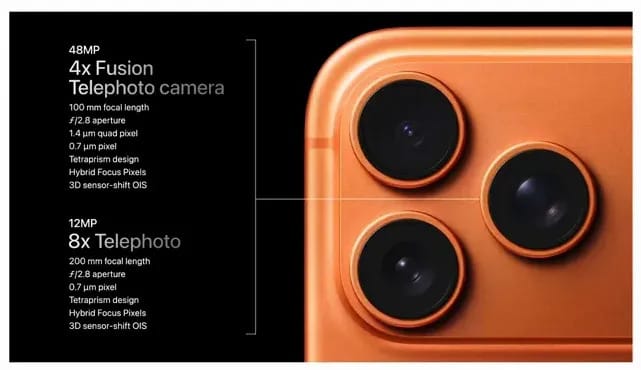
For cinematographers, the combination of a longer native optical reach and improved thermal and compute capacity broadens the iPhone’s usefulness on professional sets — especially as a crash cam, POV camera, or B-unit tool where weight and cost matter.
Video-specific upgrades: ProRes RAW, genlock, Apple Log 2, broadcast frame rates, and Open Gate
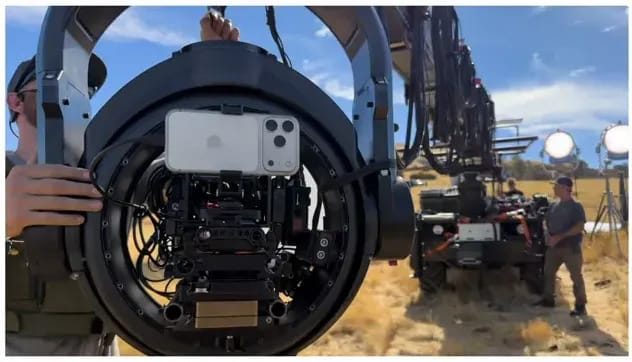
Apple pushed several features geared at production workflows rather than casual creators:
ProRes RAW recording on the iPhone — accessible through the Final Cut Camera app and the Blackmagic app. Expect very large files, but with the grading latitude that DITs and colorists demand.
Genlock support — Apple demonstrated synced multi‑iPhone setups enabling effects like bullet time and multicam capture. Genlock is a crucial addition for multi-device shoots where you want frame-accurate sync between sources.
Apple Log 2 (new): wider color gamut and support for broadcast frame rates (hosts inferred 59.94fps support in addition to standard 29.97), plus Open Gate recording, which appeals to productions that want maximum image area for reframing or special lens work.
These upgrades push the iPhone further into the “proumer” (pro + consumer) category. They’re not replacing dedicated cinema cameras, but they make the phone a credible secondary or specialized camera for production teams who need lightweight, flexible capture solutions.
Blackmagic Camera ProDock — a missing link for timecode and I/O
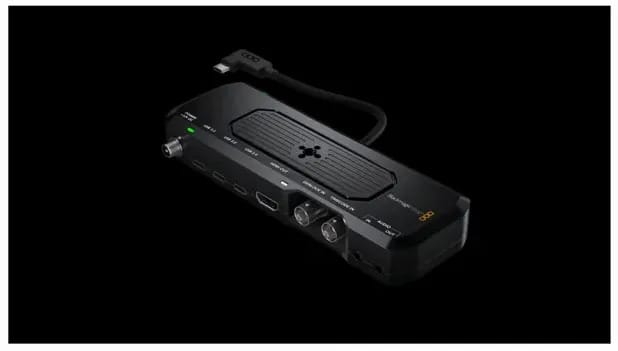
The most production-focused surprise was a collaboration product: the Blackmagic Camera ProDock. This accessory answers a lot of practical problems that cropped up when Apple first demoed genlock and multicam sync. Based on the hosts’ breakdown, the ProDock provides:
USB-C power input
Two USB 3.2 ports (fast enough for external SSDs)
One USB 2.0 port (for accessories)
HDMI output
Genlock input (BNC)
Timecode in (BNC)
3.5mm audio in/out and mounting points for rigging
The dock effectively converts an iPhone into a more production-ready node: attach external power, route timecode, monitor via HDMI, and connect fast storage. For teams using iPhones as part of a multicam rig or as a high-quality crash cam, that IO matters.
One open question from the hosts: how does mounting work in practice? The ProDock adds bulk under the phone (similar to historic camera bottom‑attachments like the GH4 expansions), so real-world rigging will likely involve cages, rails, and custom plates — exactly the sort of third-party ecosystem that already exists for mobile cinematography.
Practical production implications
Two logistical items every production should plan for:
Storage and file sizes: ProRes RAW files are enormous. Apple raised the Pro Max storage ceiling to 2TB, but at premium pricing (the 2TB Pro Max hitting around $2,000). Productions planning extended ProRes RAW workflows need external SSDs and a clear ingest pipeline.
Multicam sync and workflow: Genlock and timecode support lower the friction of including iPhones in multicam shoots, but timecode distribution and frame‑accurate sync often still require hardware (Tentacle Sync, Blackmagic docks, or similar). The ProDock helps, but teams should still design a sync strategy up front.
Other helpful changes for pros: support for broadcast frame rates and Open Gate capture opens doors for high-end finishing, while Apple Log 2 gives colorists a cleaner starting point for grading. The inclusion of the N1 connectivity chip hints at a future where low-latency local networking and tighter accessory ecosystems are standard.
Bigger picture: Apple’s strategy and the AI question
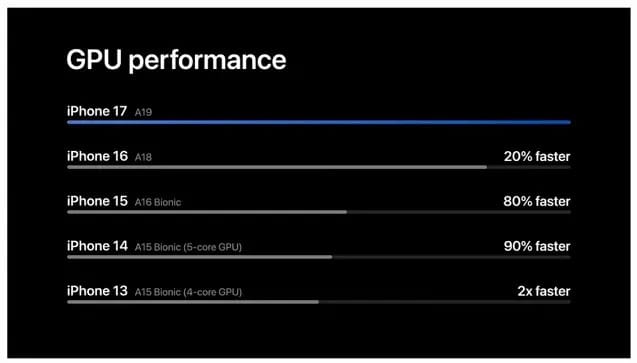
Hosts noted a broader pattern: Apple tends to be deliberate rather than first-to-market on major trends. This keynote reflected incremental, pragmatic improvements that favor robust implementation: better thermals, on-device neural accelerators, and tooling for professional pipelines.
That said, the audience of filmmakers wanted a larger AI story — a definitive, production-ready Apple Intelligence announcement tied tightly to workflows. The keynote hinted at groundwork (A19 Pro, neural accelerators, localized inference for AirPods), but no sweeping AI product launch materialized. For now, filmmakers should expect incremental gains in local ML capabilities rather than a fully integrated AI production assistant in this cycle.
Final takeaways for filmmakers and creatives
Apple is continuing to move the iPhone into practical production territory — more optical range, better thermal behavior, and explicit support for Pro features like ProRes RAW, genlock, and Open Gate.
The Blackmagic Camera ProDock reduces barriers for multi-device shooting by providing timecode, genlock, and proper I/O — a practical accessory for teams that already use iPhones on set.
AirPods Pro 3’s live translation and health sensing are small but useful additions for international shoots and field production logistics.
Storage planning is non-negotiable for ProRes RAW; consider external SSDs and an ingest workflow before you commit to RAW capture on extended projects.
Apple’s approach remains iterative: production teams can adopt new iPhone features now, but should test rigging, sync, and thermal behavior before relying on phones for mission‑critical capture.
What to test first on your next shoot
Record a short ProRes RAW clip and run ingest to your NLE to measure throughput and storage needs.
Try genlocking two or three iPhones with a ProDock (or equivalent) and confirm sync tightness across editing software.
Field-test the AirPods Pro 3 translation in a noisy location to evaluate latency and usability for interview setups.
Check thermal performance: long-form recording, stabilization, and enclosure heat paths under real-use conditions.
Conclusion
Apple’s keynote didn’t produce a single, headline-grabbing AI tool for filmmakers, but it did push several meaningful features that lower the barrier for including iPhones in professional video workflows. From ProRes RAW and genlock to native longer optics and a production-focused Blackmagic dock, the updates are cumulative and practical.
For film crews, the message is straightforward: these updates make the iPhone a more capable secondary camera and a viable tool for specialized applications. Teams should plan for storage and rigging, test thermal behavior, and leverage the new I/O options to integrate phones into established multi-camera and post-production pipelines.
